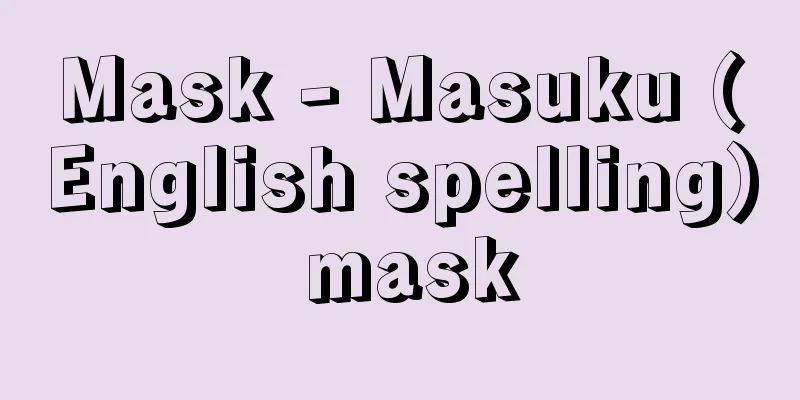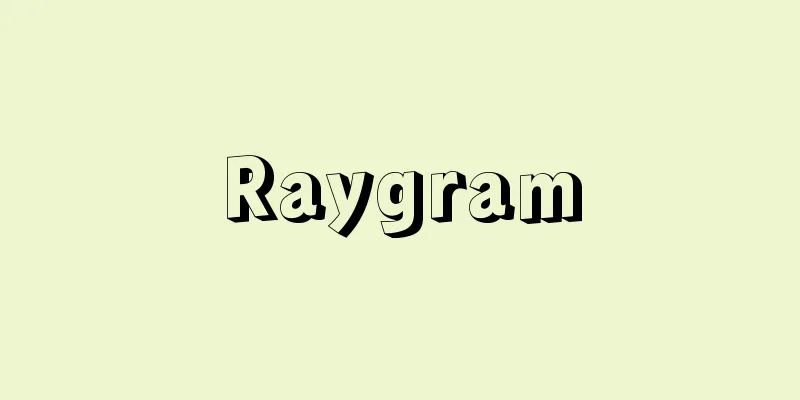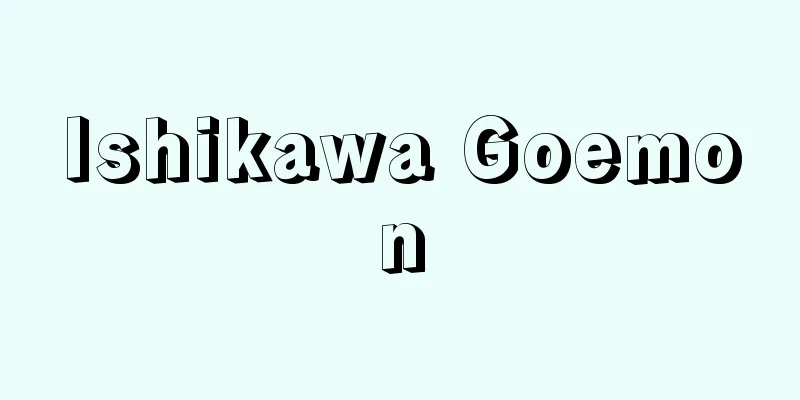Mask - Masuku (English spelling) mask

|
It refers to something that covers the whole human face, or covers part of the face such as the nose and mouth. It is used for a wide variety of purposes, such as hygiene, infection control, protective gear, masks, and so on. In hygiene, masks prevent exposure to and inhalation of harmful microparticles suspended in the air (pollen, air pollutants, bacteria, viruses, dust, and dirt) and protect the respiratory system and mucous membranes. As an infection control measure, in addition to preventing inhalation, as with hygiene purposes, masks help block the spread of droplets containing infectious viruses and bacteria, and prevent infection by keeping the throat moist and warm. In addition, masks used as masks to hide the face, and face protection in baseball, fencing, etc. are also called masks. The following article will mainly discuss masks intended for hygiene and infection control purposes. [Kazunari Onishi December 14, 2021] Various names for masksDepending on the material used, the manufacturing process, and the purpose, masks are called cloth masks, handmade masks, gauze masks, urethane masks, sports masks, sanitary masks, etc., but all of these are names based on convention or convenience, and there are no official names (no standards have been established). Sanitary masks that are generally used for household use are called surgical masks or nonwoven masks, and are primarily used for etiquette purposes. On the other hand, there are masks that have strict standards. One of these, a "dust mask," is a mask that has passed national certification standards and is used for dust prevention in industrial sites and infection control in medical settings. Dust masks that use nonwoven fabric are, in the broad sense, nonwoven masks. For hygiene purposes, it is important to distinguish whether a mask has passed this national certification standard or not (masks that have not passed the national certification standards cannot be called "dust masks"). Masks are also called respiratory protective equipment, and filter-replaceable respiratory protective equipment with an electric fan is called a PAPR (powered air purifying respirator). The electric fan maintains positive pressure inside the mask, so even if there is a gap between the face and the mask, it can prevent the inhalation of harmful particles and harmful outside air, regardless of the shape of the wearer's face or how the mask is worn. In addition, the performance and structure required for "gas masks" and "gas masks with dust protection functions" are also stipulated in the national certification standards of the Ministry of Health, Labor and Welfare. "Respiratory protective equipment with an electric fan for toxic gases" does not have a national certification standard, and is manufactured with performance and structure that conform to JIS standards. In addition, masks are also called by names that focus on their function or how they are worn. A "mask with a valve" is a mask that releases the flow of exhaled air in a certain direction to make breathing easier, and has a valve on the facepiece. One type of mask allows the inhaled air to pass through a filter and be sucked in clean, while the exhaled air is expelled directly from the mask. The other type of mask allows the exhaled air to be expelled through a filter, but allows the inhaled air to pass directly through the valve, so that infected people do not spread droplets. Since these masks have opposing effects and both can only achieve a one-way purpose, it is necessary to pay attention to the direction of the valve depending on the user's purpose, especially when it comes to infection control. "Double masking" is a method of wearing a mask intended for general use, in which two masks are intentionally worn on top of each other, with the idea of improving the effectiveness of infection control. However, the actual hygienic effect is extremely limited, and the mask pressed down from above can distort the mask underneath, causing wrinkles, which can lead to gaps between the face and the mask, resulting in a poor fit. It is also important to be aware that the thicker filter makes it difficult for breath to pass through, making it easier for breath to leak through the gap with the face. In addition, wearing a mask with a nonwoven fabric filter or cloth between the masks can also block the passage of breath. A "nose-out mask" refers to a mask that covers only the mouth and leaves the nose exposed. This can occur when the mask is intentionally lowered due to breathlessness, or when the mask slides down due to loose cloth masks or elastic straps, causing it to not fit the face. A nose-out mask does not provide the hygienic benefits of a mask. "Chin masks" are often worn when the mask is temporarily removed for eating, drinking, or facial recognition. Pulling the mask down to the chin stretches the strings, causing the mask to lose its fit when put back down. In addition, if the chin area is contaminated, the contamination will transfer to the surface of the mask that comes into contact with the mouth, so it is not recommended from a hygienic standpoint. A "wet mask" is a method of wearing a mask by intentionally wetting the mask itself or by placing wet gauze between the mask and the face. The Ministry of Health, Labor and Welfare once recommended this method as a measure against hay fever. This was based on the idea that dust particles are adsorbed by the intermolecular forces of water, but in reality, water fills the gaps in the mask filter, preventing breath from passing through, making it difficult to breathe, and allowing breath to leak through the gaps between the face and the mask. [Kazunari Onishi December 14, 2021] Storage period and usage timeMasks generally have storage periods, usage times, and breakthrough times - in the case of gas masks, the time from the start of ventilation to breakthrough (when the toxic gas passes through the canister) when a certain concentration of toxic gas is continuously ventilated into the gas mask's canister. "Disposable masks" are disposable masks, while "filter-replaceable masks" are disposable masks with only the filter part, and the main body is reused. Since it is very difficult to decontaminate and clean the microparticle collection part of the mask, the filter part is generally disposable, and the Ministry of Health, Labor, and Welfare's notice states that "those that have exceeded the limit of use time should be discarded" and "those that have changed in shape, etc. should be replaced." Therefore, in principle, it is not recommended to reuse the mask filter part, but as an exception to the infection control measures during a pandemic when there is a shortage of masks, medical facilities may decide to reuse masks after sterilization or leaving them for a long time to kill the virus. The standard for judgment in this case is the notice "Exceptional Handling of N95 Masks" compiled by the Ministry of Health, Labor, and Welfare. When using masks, it is important to keep in mind that it is difficult to remove microparticles through normal washing, and that the effectiveness of masks will decrease after initial use due to deterioration, loss of fit, and accumulation of dirt. The mask case is intended to store masks temporarily or as spare masks, and is intended to store and transport masks hygienically. Storing a mask in use can contaminate the inside of the case and the part of the mask that comes into contact with the mouth, so when using the case, it is best to follow sterilization procedures. [Kazunari Onishi December 14, 2021] The birth and evolution of masks in JapanIn Japan, people used to cover their mouths and noses with hand towels to prevent mining disease (pneumoconiosis), but there are surviving sliding door paintings that show that in the late Edo period, "lucky masks" made of silk with plum flesh sandwiched between them and tied with string to be hung from the ears were being used in Iwami Silver Mine (Shimane Prefecture). In the Meiji era, surgeons began to wear masks to prevent contamination of the clean field during surgery by bacterial droplets, and later came to be called surgical masks. Over time, the mask came to be used more as a means for infected people to prevent the spread of droplets. In 1918 (Taisho 7), the Spanish flu epidemic occurred, and a "mask edict" was issued in the United States making it mandatory to wear masks to prevent infection. In Japan, wearing masks as an infection prevention method began to be recommended for healthy people in February 1919, and in 1920, widespread awareness was promoted for healthy people to wear masks to prevent colds, rather than the etiquette of infected people covering their mouths when coughing or sneezing. As time passed, mask wearing died down due to the development of vaccines and other things. In Japan, masks have come into the spotlight each time there is an outbreak of hay fever, influenza, air pollutants classified as PM2.5, or measles. Due to the image that masks used in medical applications are highly effective, surgical masks (non-woven masks) have come to be used for infection prevention rather than for preventing the spread of droplets, and have become widespread and mainstream. During the COVID-19 epidemic that began in December 2019, masks became scarce, and handmade gauze and cloth masks became popular. They also coexisted with nonwoven masks, but the number of infected people did not decrease at all. During the COVID-19 epidemic, extreme opinions were often expressed, such as that this type of mask has no dust-proof (infection prevention) effect, but it is useful for preventing infection and spreading the disease (etiquette). The etiquette use of masks is a secondary effect, and only when a mask is properly selected and worn according to the environment can it exert its dust-proof (infection prevention) effect, and the purpose of etiquette can be achieved naturally. This tone that claims that masks are not useful for infection prevention is unclear, and has distanced the media and general users from a correct understanding of the original principles and operation of infection control measures by selecting and wearing a mask correctly. [Kazunari Onishi December 14, 2021] Masks for hygiene purposesMasks used for sanitary purposes are sometimes classified as medical masks, household masks, and industrial masks, but the actual use of masks by users does not match their effectiveness. Originally, masks should be selected according to the purpose and the thing (substance) you want to prevent, and used appropriately according to the situation and environment. For sanitary purposes, i.e., dust and gas protection and infection control, there is no mask that can be fully effective just by wearing it. There is a premise that it cannot be effective unless you comply with the handling as a protective equipment, choose a mask according to what you want to prevent, and train how to wear and handle it. In other words, if you want to prevent solid or liquid powders (pollen, dust, bacteria, viruses, etc.), you must choose a "dust mask," and if you want to prevent gases (poison gas, formaldehyde, carbon monoxide, etc.), you must choose a "gas mask." For hygienic purposes, it is necessary to simultaneously prevent the target object from (A) passing through the mask filter and (B) entering or exiting through the gap between the mask and the face. Since facial bone structure differs from person to person, it is particularly difficult to achieve (B), and a mask that fits one's face must be worn correctly after checking the fit factor (protection coefficient) and leakage rate through a fit test or fit check. In addition, to achieve (A), a filter that has the function of passing exhaled air and capturing the target object must be used. For this reason, nonwoven fabrics, which have smaller gaps in the filter itself than woven fabrics, are often used. However, if the filter performance is too high, the exhaled air will not pass through the filter, and the mask will not be effective for hygienic purposes. In terms of infection control, even if a mask advertises its antibacterial or antiviral properties, infection can occur if an infectious virus passes through the filter or enters through the gap between the face and the mask. Masks must be selected and used after considering separately the hygiene of the mask itself and the prevention of infection when worn. In terms of infection control, masks must contribute to preventing infection by blocking the infection route, out of the three elements that lead to infection (presence of pathogens, route of infection, and host susceptibility). [Kazunari Onishi December 14, 2021] Standards and PerformanceThe function of sanitary mask filters for general use sold in Japan is often based on the PFE (particle filtration efficiency) and BFE (bacterial filtration efficiency) standards of ASTM International medical masks. In addition, some Japanese mask manufacturers conduct additional tests at testing institutions that test filter performance, and may include information on the VFE (viral filtration efficiency) and pollen blocking efficiency on the mask packaging. In light of these applications, the Ministry of Health, Labor and Welfare, the Ministry of Economy, Trade and Industry, and the Japan Sanitary Materials Industry Association established the "Performance Requirements and Test Methods" for JIS T9001 (medical masks, general-use masks) and JIS T9002 (medical masks for infection control) in June 2021, and the Japanese Standards Association issued standards for the test methods. However, these standards only guarantee the performance of the filter itself, and are an evaluation value of a different dimension from the fit performance when wearing the mask, and do not indicate the protective effect when worn. While it is possible to distinguish inferior products from non-prescription products by the presence or absence of filter performance tests, there are no globally common filter tests or pass standards, so even if an imported product is labeled as "passed," it may not show the expected test results or effects. In addition, the marks and standards of the Japan Mask Industry Association are voluntary advertising standards, and are not attached to products that have guaranteed filter function or fit performance. As mentioned above, a "dust mask" refers to a mask that has passed the national certification standard. "Disposable dust masks" include N95 (USA) and DS2 (Japan), which are treated as equivalent standards. KN95 (China), KF94 (Korea), and FFP2 (Europe) are also sometimes cited as similar standards. Among them, the N95 mask is described in the standard manual as cutting more than 95% of fine particles of 0.3 micrometers (μm) or more (0.055 to 0.095 μm in aerodynamic mass diameter) at a flow rate of 85 L/min, but the actual particle collection efficiency is even higher, and it is designed to prevent almost 100% of particles of 0.1 μm or more from passing through at normal breathing flow rates. However, these national standards only test the performance of the mask itself and do not guarantee the fit of the mask when worn, which may result in unintended results for the user. In addition, "filter-replaceable dust masks" have a national certification seal affixed to the facepiece and filtering material. The standards for the fit performance of masks, related to (B) above, are expressed in terms of fit factor (protection factor) and leakage rate, and in the United States, OSHA (Occupational Safety and Health Agency) and ISO (International Organization for Standardization) have set the pass criteria. When entering medical settings with a high risk of infection or work sites with dust exposure, you must use a mask that has passed a fit test on your face. In Japan, JIS T8150 (Selection, Use and Maintenance Management Methods for Respiratory Protective Equipment) was revised in May 2021 to stipulate fit test procedures consistent with ISO for welding fume exposure measures in industrial sites. As a result, it is expected that the mandatory implementation of fit tests in industrial and medical settings will accelerate in the future. The airtightness of a mask and the difficulty of breathing are both advantages and disadvantages. With masks that have a high dust-proofing effect, the difficulty of breathing and heat were issues, but with the advent of "breath-following electric fan respirators," which are electric fan filter replaceable respirators equipped with a breathing follow function (the rotation of the fan is adjusted according to breathing and the amount of air blown is adjusted), it has become possible to achieve both extremely high protection and ease of breathing, improving the situation. In addition, even non-woven sanitary masks that are not "dust masks" can have a high filtering performance and can obtain a sufficient fit factor if they fit the face. In this regard, the effectiveness of the mask will not be achieved unless the performance of the mask itself, the fit performance, the size of the user's face and the feel of the skin, the skeletal elements, the purpose of use, and the wearing environment match, and there are countless combinations of these factors. Due to these characteristics, masks cannot be overrated or underrated, and it is difficult to uniformly state the effectiveness of a specific mask. Masks that don't fog up glasses, scented masks, fashionable masks, etc. have garnered attention in the past, but in mask science, it happens that when one function is taken care of, another function is lost. Cloth masks, urethane masks, and sanitary masks are not originally designed to protect against dust or infection. Compared to not wearing one at all, they can help to cut down on large droplets such as saliva and runny noses and prevent contact infection, but they are not suitable for preventing the inhalation of fine dust particles or for preventing microdroplet and airborne infections, and do not provide sufficient preventive effect, so their effectiveness should not be overestimated. It is known that the fit of a mask can be compromised by actions such as moving the head up and down or side to side, bowing, talking, etc. When relying on only one infection control measure, infection can occur when that measure fails, so masks must be viewed as a tool and multiple measures must be taken simultaneously, including hand washing, gargling, social distancing, and vaccination. [Kazunari Onishi December 14, 2021] "Masks and the Japanese" by Mitsutoshi Horii (2012, Hideaki Publishing Co.) "The Dignity of Masks" by Kazunari Onishi (2019, Gentosha) [Reference] | |Source: Shogakukan Encyclopedia Nipponica About Encyclopedia Nipponica Information | Legend |
|
人間の顔面の全体に被るもの、または鼻と口などの顔の一部を覆うものをさす。衛生、感染対策、防具、面、仮面と用途は多岐にわたり、さまざまな目的で使用される。 衛生では、空気中に浮遊する有害な微小粒子(花粉、大気汚染物質、細菌、ウイルス、塵(ちり)や埃(ほこり))の曝露(ばくろ)や吸入を防ぎ、呼吸器や粘膜を保護する役割をもつ。感染対策としては、衛生目的と同様に吸入防止に加え、感染力のあるウイルスや細菌を含む飛沫(ひまつ)拡散の遮断、のどの保湿や保温効果による感染不成立を導くことに役だつ。このほか、顔を隠すための仮面や覆面として使用されるもの、野球やフェンシングなどの顔面防具もマスクとよばれる。 以下本稿では、おもに衛生や感染対策を目的としたマスクについて述べる。 [大西一成 2021年12月14日] マスクのさまざまな名称マスクの名称は、用いられる素材、製造過程や用途によって、布マスク、手作りマスク、ガーゼマスク、ウレタンマスク、スポーツマスク、衛生マスクなどと変化するが、いずれも慣例や便宜上の呼称であり、正規名称というものはない(規格が定められているわけではない)。一般的に家庭用として普及している衛生マスクは、サージカルマスク、不織布マスクとよばれ、エチケット用途に用いる意味合いが強い。 一方、規格が厳格に定められたマスクもある。その一つである「防じんマスク」は、国家検定規格に合格したマスクのことをいい、産業現場の防塵(じん)対策、医療現場の感染対策に用いられる。防じんマスクでも不織布を使用しているものは、広義には不織布マスクである。衛生用途においても、この国家検定規格に合格したマスクかどうかの区別が重要となる(国家検定規格に合格していないマスクには「防じんマスク」の名称を用いることはできない)。 マスクは、呼吸用保護具ともいい、とくに電動ファン付きフィルター取替式呼吸用保護具のことをPAPR(powered air purifying respirator)という。電動ファンによりマスク内が陽圧に保たれるため、顔面とマスクに隙間(すきま)があっても、着用者の顔の形状や着け方にかかわらず、有害粒子や有害外気の吸入を抑制することができる。また、「防毒マスク」「防じん機能付き防毒マスク」も、厚生労働省の国家検定規格で必要な性能と構造が定められている。「有毒ガス用電動ファン付き呼吸用保護具」は、国家検定規格がなく、JIS規格に準じた性能と構造で製造されている。 このほかに、機能や装着方法に着目したマスクの呼称もある。 「弁付きマスク」は、呼吸をしやすくするため一定方向に呼気の流れを解放したもので、マスクの面体に弁がついたものである。その一つは、吸気がフィルターを通過することできれいな状態で吸い込まれ、呼気はそのままマスクの外に排出されるマスクで、もう一つは、感染者が飛沫を拡散させないように、呼気はフィルターを通して排出されるが、吸気は弁でそのまま通すマスクであり、それぞれ相反する効果をもたらすもので、どちらも一方向目的しか達成できないため、とくに感染対策では、使用者の目的に応じて弁の方向に注意する必要がある。 「二重マスク」は、一般向けマスクを意識的に2枚重ねて着用し、感染対策効果の向上をイメージした装着方法の一つである。ただし実際の衛生上の効果はきわめて限定的で、上から押さえたマスクが、下のマスクをゆがめてしわができてしまい、逆に顔とマスクの間に隙間ができてフィット性が破綻(はたん)してしまうことや、厚くなったフィルター部分を呼気が通りにくくなるがゆえに、顔との隙間からより呼気が漏れやすくなるという点に注意を払わなければならない。加えて、マスクの間に不織布フィルターや布などを挟んだ着用も呼気の通り道をふさぐことになる場合がある。 「鼻出しマスク」は、口部のみを覆い鼻が出ている状態での着用を示す。マスク着用により息が苦しくなり意図的にマスクを下げる場合や、布マスクやゴム紐(ひも)のゆるみなどでマスクが下にずり落ち、顔にフィットしていない状態のことである。鼻出しマスクでは、衛生上のマスクの効果は発揮されない。 「顎(あご)マスク」は、飲食や顔認証のために一時的にマスクを外す際に行われることが多い。マスクを顎まで下げることで紐が伸びてしまい、戻した際にフィットの破綻が起こる。また、顎部分が汚染している場合は、マスクの口接触面へ汚染が遷移するため、衛生上推奨されない。 「濡れマスク」は、意図的にマスク自体を濡らして使用したり、マスクの間に濡れたガーゼなどを挟む着用方法である。かつて厚生労働省が花粉症の対策として推奨した時期がある。水分の分子間力による粉塵の吸着をイメージしたものであるが、実際はマスクフィルターの隙間を水分が埋めてしまい、呼気を通さないため息苦しくなり、顔とマスクの隙間から呼気が漏れるようになる。 [大西一成 2021年12月14日] 保管期間と使用時間マスクには、保管期間と使用時間、破過時間――防毒マスクにおいては、防毒マスクの吸収缶に、一定濃度の有毒ガスを連続して通気した際、通気の開始から破過(有毒ガスが吸収缶を通過する)までの時間――が定められているのが一般的である。「使い捨てマスク」はマスクそのものを使い捨てにするもので、「フィルター取替式マスク」はフィルター部のみを使い捨て、本体は再利用するものである。マスクの微小粒子捕集部の除染・洗浄は非常に困難であるため、フィルター部は使い捨てが原則となり、厚生労働省の通達では、「使用限度時間を経過したものは廃棄」「形状等の変化したものは交換」としている。そのためマスクフィルター部の再使用は原則推奨されないが、パンデミック下のマスク供給不足時の感染対策においては、特例として滅菌や長時間放置によるウイルス死滅後の再使用が、医療施設の判断で運用されることがある。この場合の判断基準として、厚生労働省が取りまとめた通達「N95マスクの例外的取扱いについて」がある。マスクは、通常の洗濯では微小粒子の除去は困難で、劣化やフィット破綻、ゴミの付着など、初期使用時以降は効果が低減することを念頭に置いたうえで使用する必要がある。 なお、マスクケースは、一時的にマスクを保管したり、予備のマスクを保管しておくケースで、衛生的にマスクを保管したり持ち運んだりすることを目的としたものである。使用中のマスクの保管は、ケース内を汚染したり、マスクの口接触部を汚染させたりするため、ケースの使用にあたっては滅菌操作に準じたくふうをしたほうがよい。 [大西一成 2021年12月14日] 日本におけるマスクの誕生と変遷日本では、鉱山病(塵肺)対策のために手拭(てぬぐい)で口や鼻を覆っていたが、江戸時代末期には石見(いわみ)銀山(島根県)で絹の間に梅肉を挟んだものに紐をつけて耳にかける「福面」が使われていたことを示す襖絵(ふすまえ)が残っている。 明治時代になると、手術時の清潔野の細菌飛沫による汚染防止のために外科医がマスクを使用するようになり、後にサージカル(外科の)マスクとよばれるようになった。時の経過とともにこのマスクは、感染者が飛沫拡散させないように着用するという意味合いが強くなる。 1918年(大正7)にはスペインかぜが流行し、アメリカで感染予防を目的としたマスクの着用を義務づける「マスク令」が発令された。日本では、1919年2月に感染予防法として健常者がマスクを着用することが推奨され始め、1920年には、感染者が咳(せき)やくしゃみをするときに口を覆うようなエチケットではなく、感冒予防のための健常者のマスク着用が大々的に啓発された。時は流れ、ワクチン等の開発によりマスク着用は下火になった。 日本では、花粉症やインフルエンザ、PM2.5に分類される大気汚染物質や麻疹(ましん)の流行などで、そのつどマスクが注目され、医療で使用されているマスクは効果が高いとするイメージ宣伝から、サージカルマスク(不織布マスク)が飛沫拡散予防の意味ではなく感染予防のために使用され普及し、主流となっていった。 2019年(令和1)12月からの新型コロナウイルス感染症(COVID(コビッド)-19)の流行ではマスク不足となり、手づくりが可能なガーゼマスク、布マスクが普及した。不織布マスクとも共存したが、感染者数は一向に減らなかった。COVID-19流行下においては、この種のマスクに防塵(感染予防)効果はないが、人に感染させない=拡散させないためには意味がある(エチケット)といった極論が多く語られた。マスクのエチケット用途は副次的効果であり、マスクはその環境に応じて正しく選択し、正しく着用してこそ防塵(感染予防)効果が発揮され、おのずとエチケットの目的も達成できるのである。感染予防には役だたないとするこのような論調は、どのマスクをさしているものか明らかでなく、マスクの選択と正しい着用によって感染対策を行う本来の原理や運用に対する正しい理解を、メディアや一般使用者から遠ざけた。 [大西一成 2021年12月14日] 衛生用途のマスク衛生用途で使用されるマスクは、医療用マスク、家庭用マスク、産業用マスクと区別されることがあるが、実際の使用者のマスク用途が効果に一致していない現状がある。本来、マスクは目的と防ぎたいもの(物質)によって種類を選択し、状況や環境に応じて適切に使い分ける必要がある。衛生用途すなわち防塵・防毒や感染対策においては、ただ着用するだけで完全に効果を発揮できるマスクはない。防護具としての扱いを遵守し、防ぎたいものによってマスクを選び、その着用方法や扱い方を訓練して運用しなければ効果を発揮することはできないという前提がある。すなわち、固体や液体からなる粉体(花粉、粉塵、細菌、ウイルスなど)を防ぐ場合は「防じんマスク」、気体(毒ガス、ホルムアルデヒド、一酸化炭素など)を防ぐ場合は「防毒マスク」を選択しなければならない。 衛生用途では、防ぎたい対象物が(A)マスクのフィルターを通らないこと、(B)マスクと顔の隙間から出入りしないこと、を同時に達成する必要がある。とくに顔骨格は個人によって異なるため、(B)の達成は困難になりやすく、フィットテストやフィットチェックによってフィットファクター(防護係数)や漏れ率を調べたうえで、自分の顔にあうマスクを正しく着用しなければならない。また(A)の達成のためには、呼気を通し対象物を捕集する機能を有するフィルターを使用しなければならない。そのため、織布よりもフィルター自体の隙間が小さい不織布が用いられることが多い。しかし、フィルターの性能が高すぎると、呼気がフィルターを通過しないため、衛生用途のマスク効果を発揮することはできない。 感染対策においては、マスク自体の抗菌性や抗ウイルス性をうたったものであっても、感染力のあるウイルスがフィルターを通過したり、顔とマスクの隙間から入ったりすれば感染は成立する。マスク自体の衛生保持と着用時の感染予防は別個に判断してマスクを選択し、使用する必要がある。感染対策においては、感染成立の3要素(病原体の存在、感染経路、宿主の感受性)のうち感染経路の遮断による感染不成立に貢献できるマスクでなければならない。 [大西一成 2021年12月14日] 規格と性能日本で販売される一般向けの衛生マスクフィルターの機能は、アメリカASTMインターナショナルの医療用マスク規格試験のうちPFE(微粒子濾過(ろか)捕集効率)とBFE(細菌濾過捕集効率)が準用されることが多い。また、日本の一部のマスク製造メーカーは、フィルター性能を試験する検査機関にて追加試験を行い、VFE(ウイルス濾過捕集効率)や花粉遮断捕集効率についての情報をマスクのパッケージ等に記載していることもある。これらの準用を背景として、厚生労働省、経済産業省、日本衛生材料工業連合会は、JIS T9001(医療用マスク、一般用マスク)、JIS T9002(感染対策医療用マスク)の「性能要件及び試験方法」を2021年6月に制定し、日本規格協会から試験方法の規格が発行された。 ただしこれらの規格はフィルターそのものの性能を保証しただけで、マスク着用時のフィットの性能とは別の次元の評価値であり、着用時の防護効果を示しているわけではない。 フィルター性能試験の有無によって粗悪品との区別ができる一方で、全世界共通のフィルター試験や合格基準があるわけではないため、輸入品などにおいては「合格」と記載があっても、期待通りの試験結果や効果を示したものではない場合がある。また、日本の全国マスク工業会のマークや規格は、広告表示自主基準であり、フィルター機能やフィット性能が保証されたものに付記されているわけではない。 前述の通り、「防じんマスク」は国家検定規格に合格したマスクのことをさす。「使い捨て防じんマスク」としてはN95(アメリカ)、DS2(日本)が該当し、これらは同等の規格として扱われる。また、KN95(中国)、KF94(韓国)、FFP2(ヨーロッパ)も類似の規格としてあげられることがある。なかでもN95マスクは、規格のマニュアル上は0.3マイクロメートル(μm)以上(空力学的質量径で0.055~0.095μm)の微小粒子を流量85L/分で95%以上カットすると記載されているが、実際の粒子捕集効率はさらに高く、通常の呼吸流量では0.1μm以上の粒子をほぼ100%通過させない仕様となっている。しかし、これらの国家規格についてもマスク自体の性能を試験しているだけにすぎず、着用状況のフィットを保証したものではないため、使用者の意図しない結果をもたらすことがある。 なお、「フィルター取替え式防じんマスク」では、面体と濾過材に、国家検定合格標章(証紙)が貼られている。 前述の(B)に関連する、マスクのフィット性能に関する規格は、フィットファクター(防護係数)、漏れ率で表され、アメリカではOSHA(国際安全衛生センター)やISO(国際標準化機構)で合格基準が定められている。感染リスクの高い医療現場や粉塵曝露のある作業現場に入る際には、自分の顔でフィットテストに合格したマスクを使用しなければならない。日本では、2021年5月にJIS T8150(呼吸用保護具の選択、使用及び保守管理方法)が改正され、産業現場における溶接ヒューム曝露対策において、ISOに整合したフィットテスト手順が規定された。これにより、今後、産業現場や医療現場においてフィットテスト実施の義務化が加速していくことが考えられる。 マスクの密閉性と息苦しさは、一得一失である。防塵効果の高いマスクでは息苦しさや暑さが課題になっていたが、電動ファン付きフィルター取替式呼吸用保護具に呼吸追随機能(呼吸にあわせてファンの回転が調整され送風量が調整される)が搭載された「呼吸追随式電動ファン付き呼吸用保護具」の登場によって、きわめて高い防護機能と呼吸のしやすさが両立でき改善されている。 なお、「防じんマスク」ではない不織布の衛生マスクであっても、フィルター性能が高く、顔にフィットすれば十分なフィットファクターを得ることができる場合がある。この点において、マスク自体の性能、フィット性能、使用者の顔のサイズや皮膚の感触、骨格要素、使用目的、着用環境が合致しなければ効果は発揮されず、この因子の組合せは無数にあるといえる。このような特性から、マスクは過大評価も過小評価もできず、一様に特定のマスクの効果を述べることはむずかしい。 眼鏡が曇らないマスク、香るマスク、ファッション性の高いマスクなどが注目されたこともあるが、一つの機能をとるともう一つの機能がたたなくなるということがマスク科学では起こる。布マスクやウレタンマスク、衛生マスクは、もともと防塵用や感染対策用のマスクではない。まったくつけていない状況と比較すると、つばや鼻水など大きな飛沫のカットや接触感染予防に貢献する部分もあるが、微小粉塵の吸入防止やマイクロ飛沫感染・空気感染対策に用いるには適当でなく、十分な予防効果を得ることはできないため、効果の過大評価をしてはならない。 マスクは、顔を上下・左右に動かす、お辞儀する、話すといった動作で着用フィットが破綻することが知られている。感染対策では、一つだけの対策に頼るとその対策が破綻した際に感染が成立してしまうため、マスクは一つのツールとしてとらえ、手洗い、うがい、ソーシャルディスタンシング、ワクチン接種等とあわせて同時に複数の対策を行わなければならない。 [大西一成 2021年12月14日] 『堀井光俊著『マスクと日本人』(2012・秀明出版会)』▽『大西一成著『マスクの品格』(2019・幻冬舎)』 [参照項目] | |出典 小学館 日本大百科全書(ニッポニカ)日本大百科全書(ニッポニカ)について 情報 | 凡例 |
<<: Muskrat - Maskuratto (English spelling) Musk rat
Recommend
Briggs, C.
…(1) Celtic fairies, (2) Teutonic elves, (3) Arth...
Wagon
One of the Japanese zither-family string instrume...
Yellowish brown soil
...climate changes in temperature and dryness hav...
Trezini, D.
...After that, pontoon bridges and pontoon bridge...
Ise white powder - Ise face powder
A white flour speciality of Izawa Village, Ise Pr...
Acacia cultriformis (English spelling) Acaciacultriformis
…[Hiroshi Aramata]. … *Some of the terminology th...
Synchronous meteorological satellite
... Geostationary meteorological satellites were ...
Bismarck - Otto Eduard Leopold Fürst von Bismarck
German politician who contributed to the politica...
zurla
...The dance is generally a round dance called ko...
Oyama Castle
This castle was located in Oyama City, Tochigi Pre...
echoppe (English spelling)
...In the 18th century, there were painters such ...
Ethnic Group - Ethnic Group
...That is, it began with the discovery of the ph...
Fire Rocket
〘Noun〙 ("Yan" means arrow) Arrows that a...
over the top
…At that point, a scrum will be held for the oppo...
Selection - quán xuǎn (English)
A system of selection for officials implemented in...









